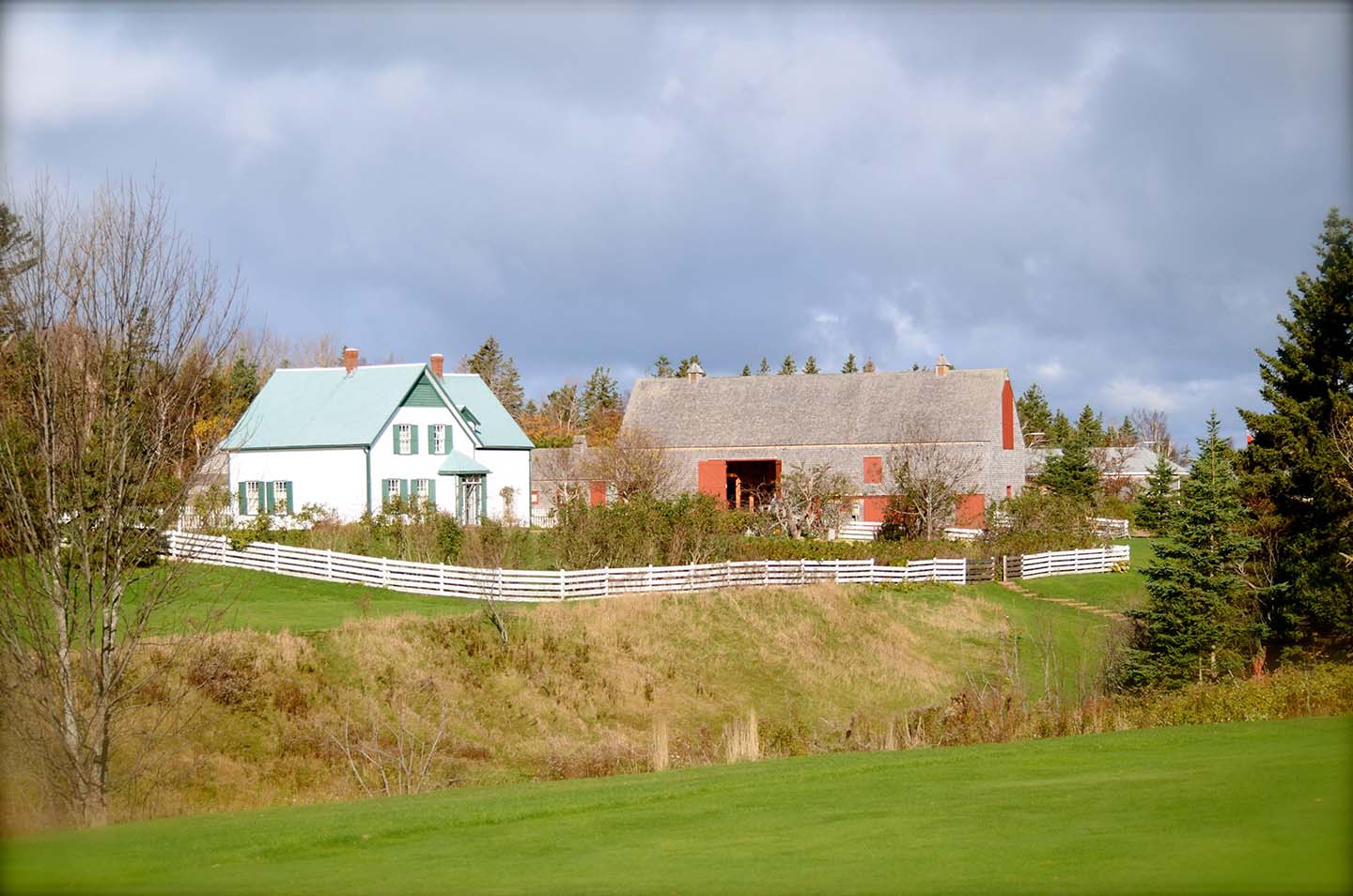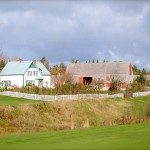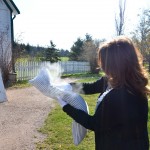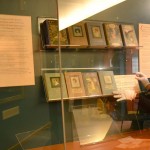Greetings from Cavendish, Prince Edward Island

This Letter from the Field was shared with us by Sarah Gothie – MSP09.
Prince Edward Island (PEI) is a tiny, crescent-shaped province located north of Nova Scotia and east of New Brunswick. The island is a patchwork of rolling fields festooned with clusters of evergreen trees. Natural, cultural and culinary pleasures await visitors, from gentle waves breaking on white sand beaches, to Acadian fiddle music, to local lobsters and mussels served with a side of famous PEI potatoes grown in the island’s iron-rich red soil. But for many, Prince Edward Island is best known as the home of a fictional redheaded orphan named Anne Shirley, who is sent by accident to elderly siblings Matthew and Marilla Cuthbert. Anne convinces the Cuthberts to let her stay with them and after a series of misadventures and social missteps, she flourishes intellectually and emotionally as she grows up on their farm, Green Gables.
Canadian author Lucy Maud Montgomery published Anne of Green Gables in 1908, and though she went on to write over twenty more books and hundreds of short stories, Anne is by far her most famous work, having sold more than fifty million copies. Montgomery modeled the fictional Green Gables after a farm in her hometown of Cavendish, a small community on the island’s north shore. In the 1930s, this farm became part of the newly formed Prince Edward Island National Park; today Green Gables Heritage Place is part of the L.M. Montgomery’s Cavendish National Historic Site, a designated area of national significance that also includes the privately owned site of L.M. Montgomery’s Cavendish Home. Green Gables Heritage Place welcomes approximately 140,000 visitors annually to experience the original farmhouse, which is decorated to match the descriptions in the novel, plus reproduction outbuildings with exhibits on farm life in the 1890s, a visitor reception centre displaying photographs and artifacts from Montgomery’s life, and two interpretive trails that offer glimpses of the natural areas that inspired her as a writer.
Since my arrival in late August, I’ve been developing ideas for themed tours and working on ways to enhance the experience of fall cruise ship visitors who arrive with limited time and limited knowledge of the site. The range of prior knowledge visitors bring varies widely—from people who have never heard of the author or her work, but know that Green Gables is a must-see local attraction, to those who have yearned to visit since childhood. I’ve found great satisfaction in assisting visitors as a front-line staff person, speaking with “pilgrims” from the United States, Japan, China, Europe, Australia, and elsewhere in Canada who have journeyed to see the magical landscape they imagined as children while reading Montgomery’s story.
In the height of the summer season, the house might see 1,200-1,500 visitors in a single day; now, as staff prepare to close the site for winter, we welcome perhaps twenty-five visitors or fewer during reduced hours of operation. Today I am assisting with artifact inventory in the Green Gables house and visitor reception centre. Each object must be carefully cleaned and examined for damage and its accession number and location checked against database records. Dust is shaken from replica textiles, such as the pillows in “Anne’s Room,” while rare cultural resources, such as a typewriter owned by Montgomery and early edition copies of her books, are gently dusted with a camel hair brush.
For most Anne fans, PEI is a literary utopia they have yearned to visit. But the island is a real place, and staff at Parks Canada work tirelessly to produce the idyllic destination visitors seek. This may include inspecting trails for soil erosion, researching and writing new program content, or handling emergent situations, such as a bus driver’s accidental discharge of human waste into the parking lot on an otherwise lovely Sunday afternoon! As I prepare to depart and begin drafting a dissertation chapter about memory and identity at this site, I wish to express gratitude to the wonderful people at Parks Canada who made this period of immersive learning, research and reflection possible.
Submitted June, 2013







